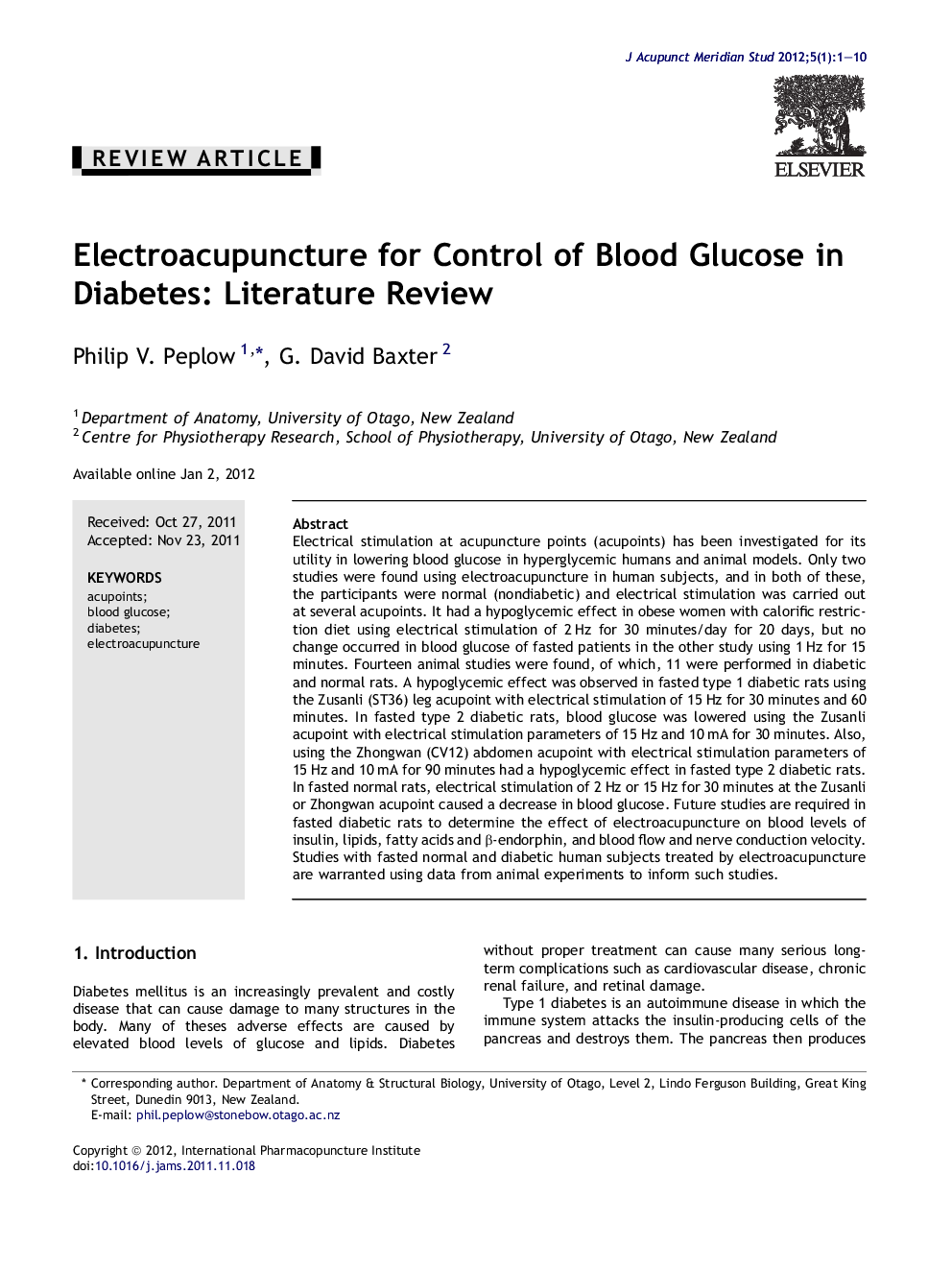| Article ID | Journal | Published Year | Pages | File Type |
|---|---|---|---|---|
| 3098790 | Journal of Acupuncture and Meridian Studies | 2012 | 10 Pages |
Electrical stimulation at acupuncture points (acupoints) has been investigated for its utility in lowering blood glucose in hyperglycemic humans and animal models. Only two studies were found using electroacupuncture in human subjects, and in both of these, the participants were normal (nondiabetic) and electrical stimulation was carried out at several acupoints. It had a hypoglycemic effect in obese women with calorific restriction diet using electrical stimulation of 2 Hz for 30 minutes/day for 20 days, but no change occurred in blood glucose of fasted patients in the other study using 1 Hz for 15 minutes. Fourteen animal studies were found, of which, 11 were performed in diabetic and normal rats. A hypoglycemic effect was observed in fasted type 1 diabetic rats using the Zusanli (ST36) leg acupoint with electrical stimulation of 15 Hz for 30 minutes and 60 minutes. In fasted type 2 diabetic rats, blood glucose was lowered using the Zusanli acupoint with electrical stimulation parameters of 15 Hz and 10 mA for 30 minutes. Also, using the Zhongwan (CV12) abdomen acupoint with electrical stimulation parameters of 15 Hz and 10 mA for 90 minutes had a hypoglycemic effect in fasted type 2 diabetic rats. In fasted normal rats, electrical stimulation of 2 Hz or 15 Hz for 30 minutes at the Zusanli or Zhongwan acupoint caused a decrease in blood glucose. Future studies are required in fasted diabetic rats to determine the effect of electroacupuncture on blood levels of insulin, lipids, fatty acids and β-endorphin, and blood flow and nerve conduction velocity. Studies with fasted normal and diabetic human subjects treated by electroacupuncture are warranted using data from animal experiments to inform such studies.
